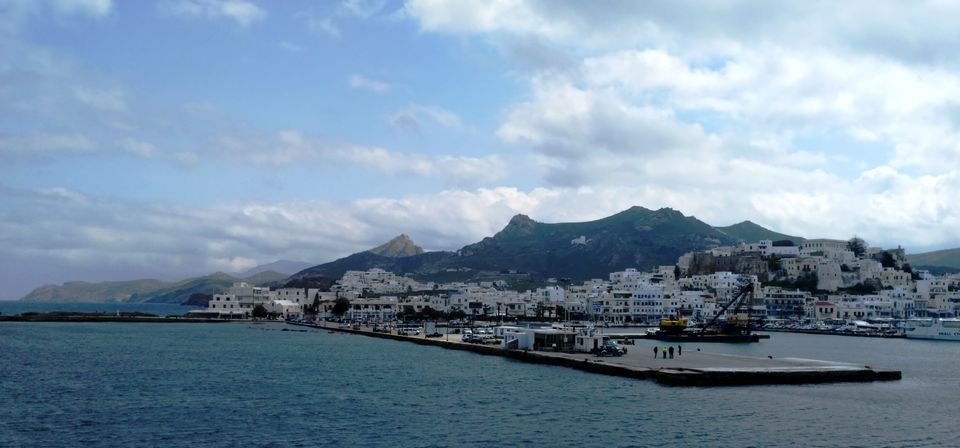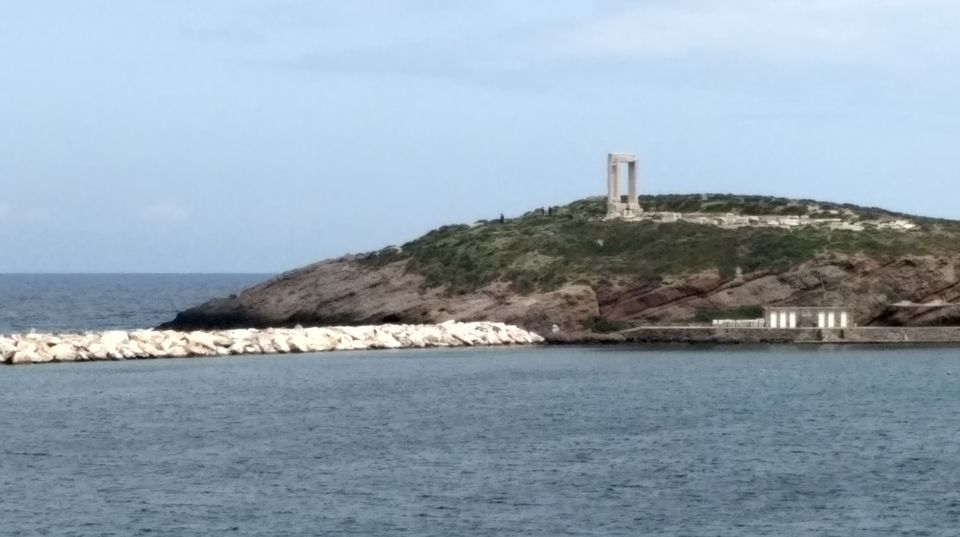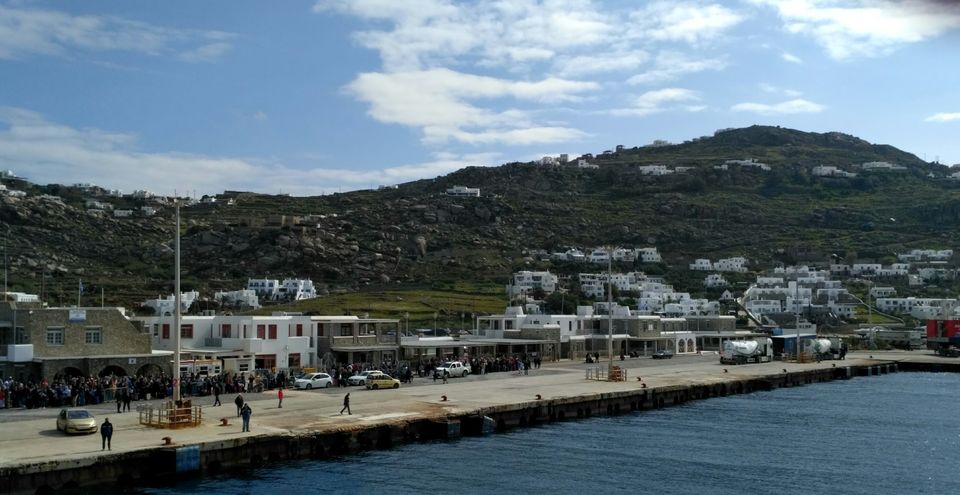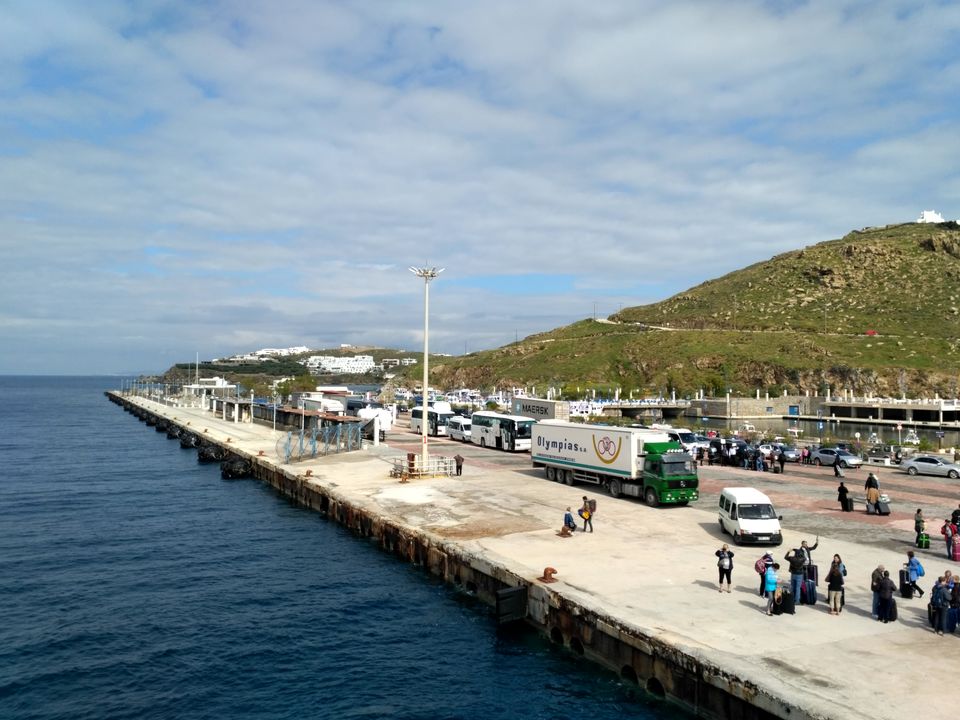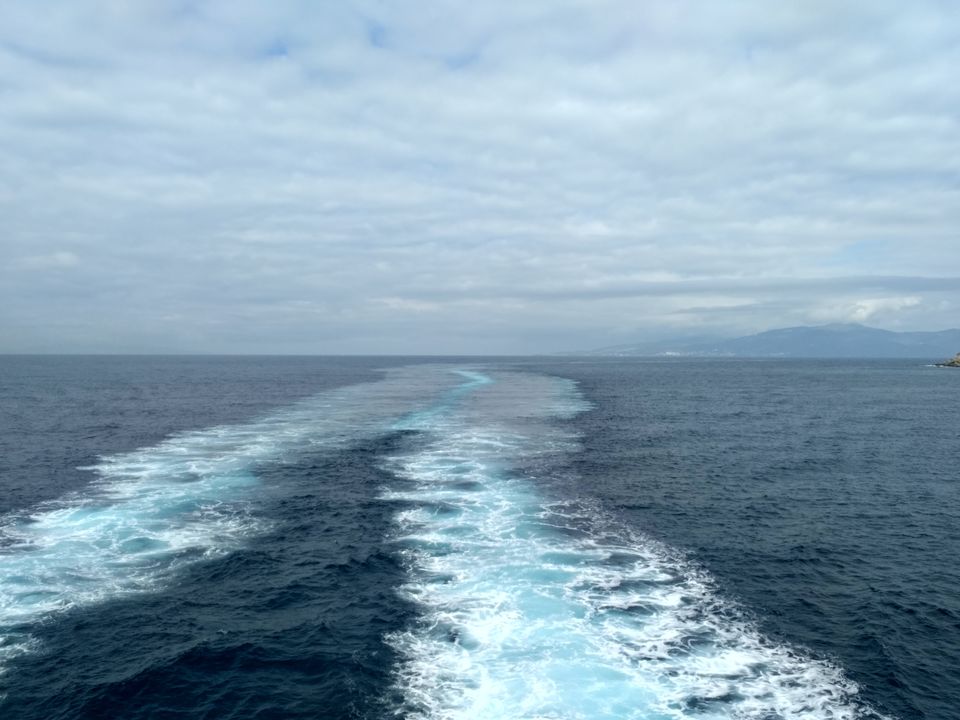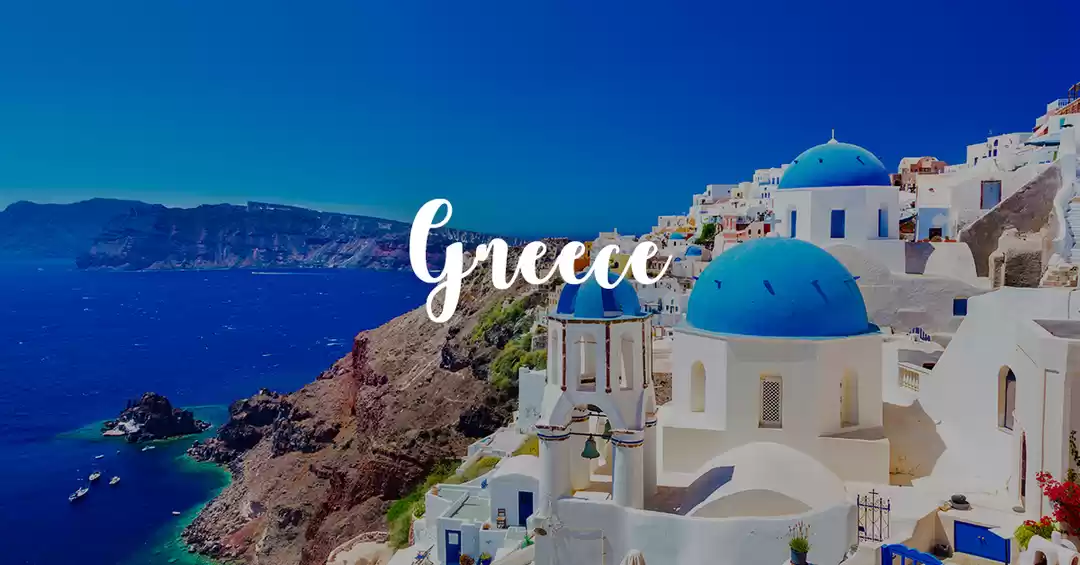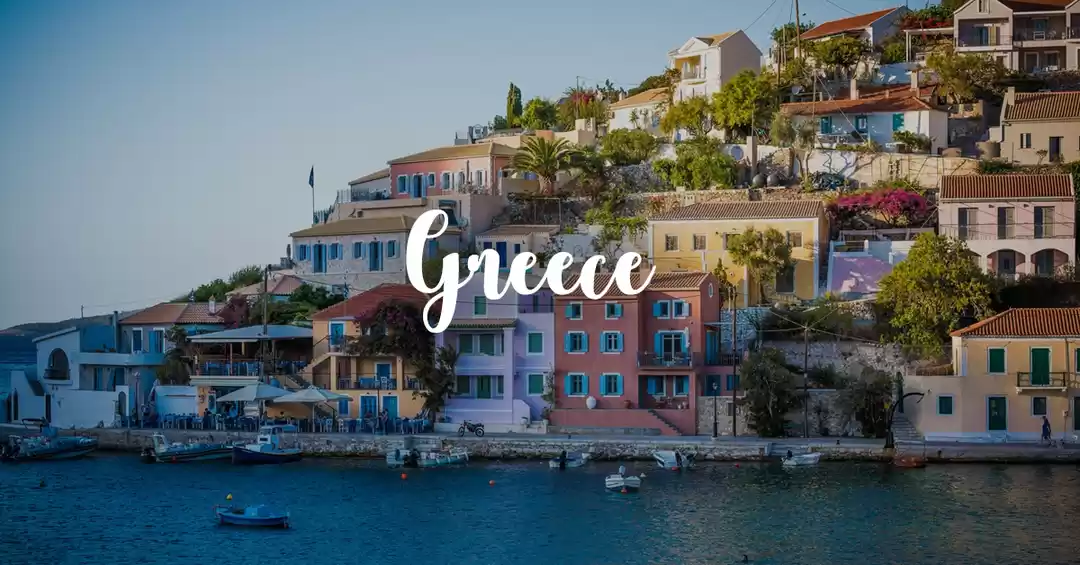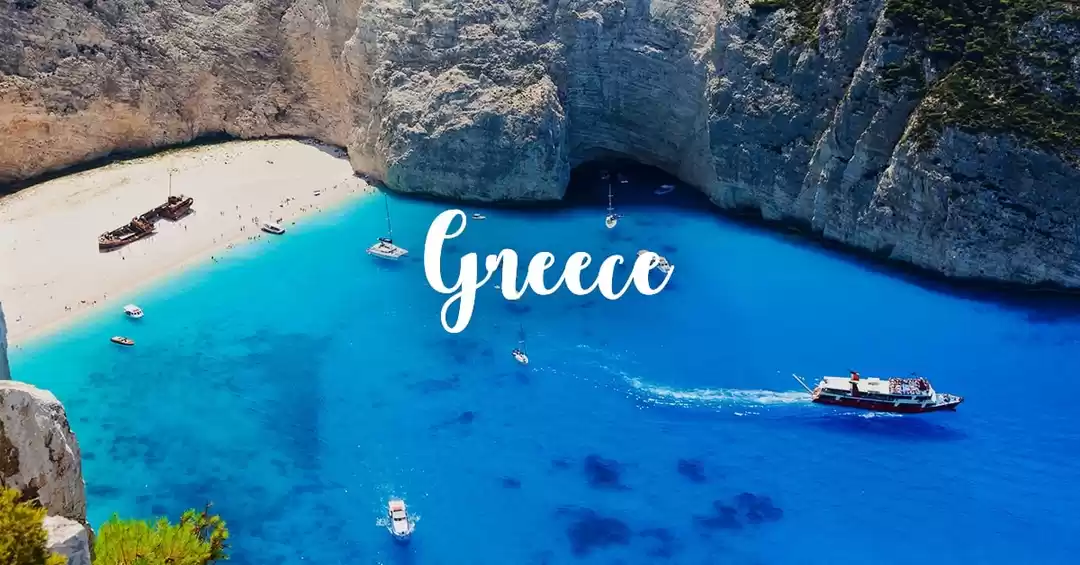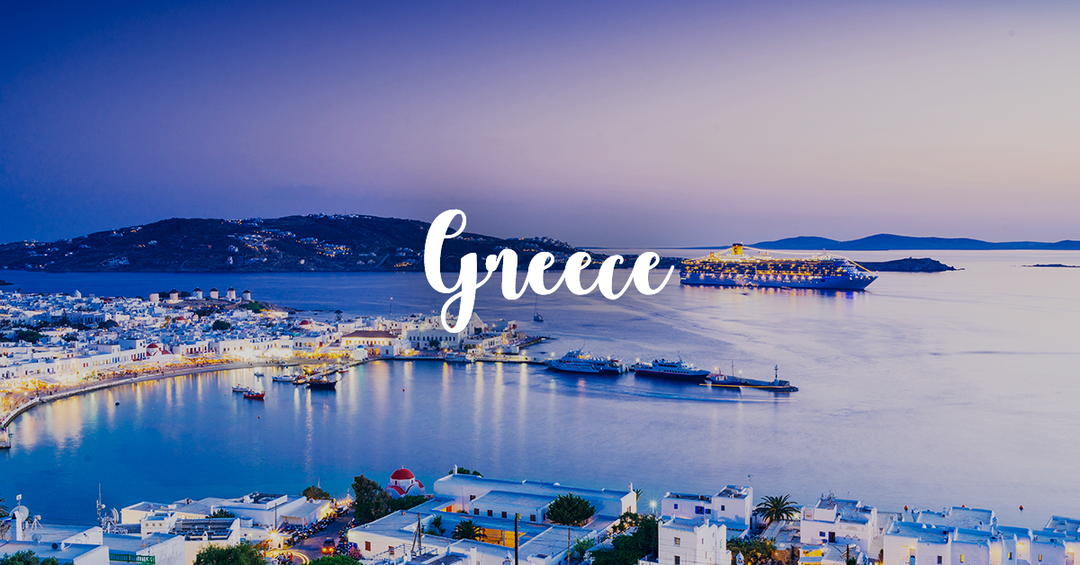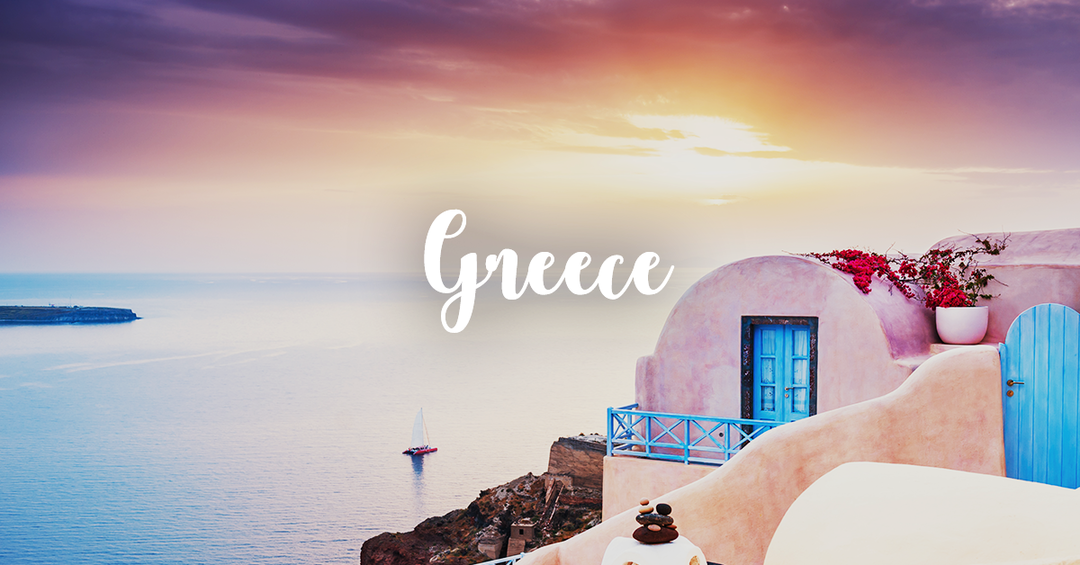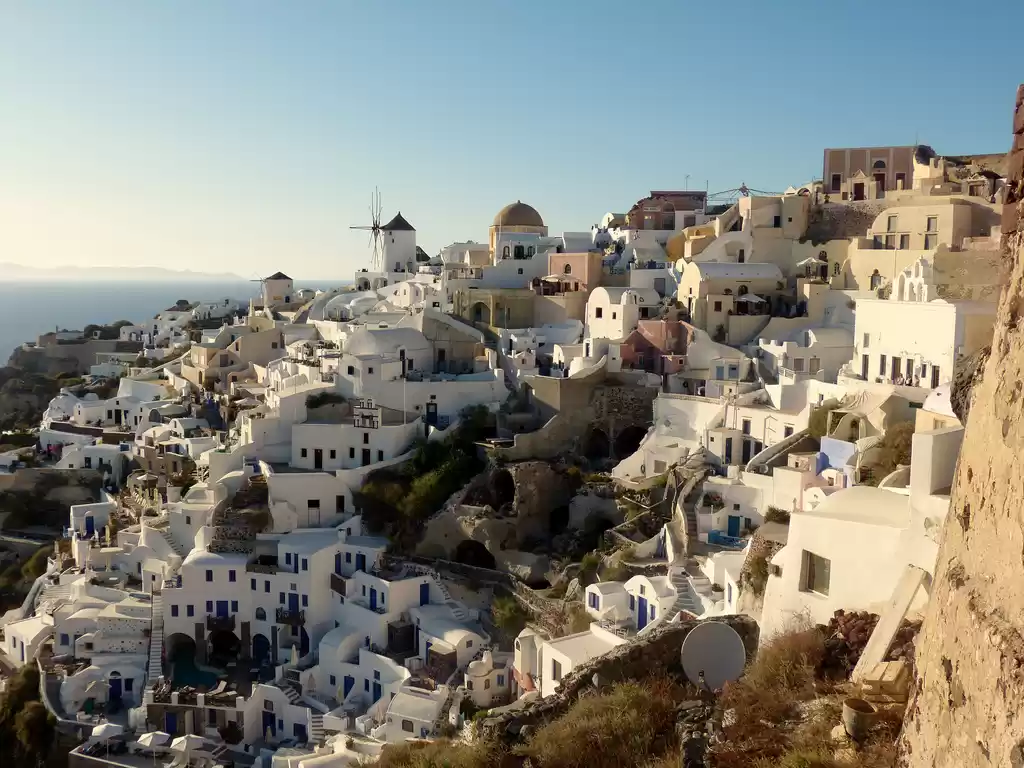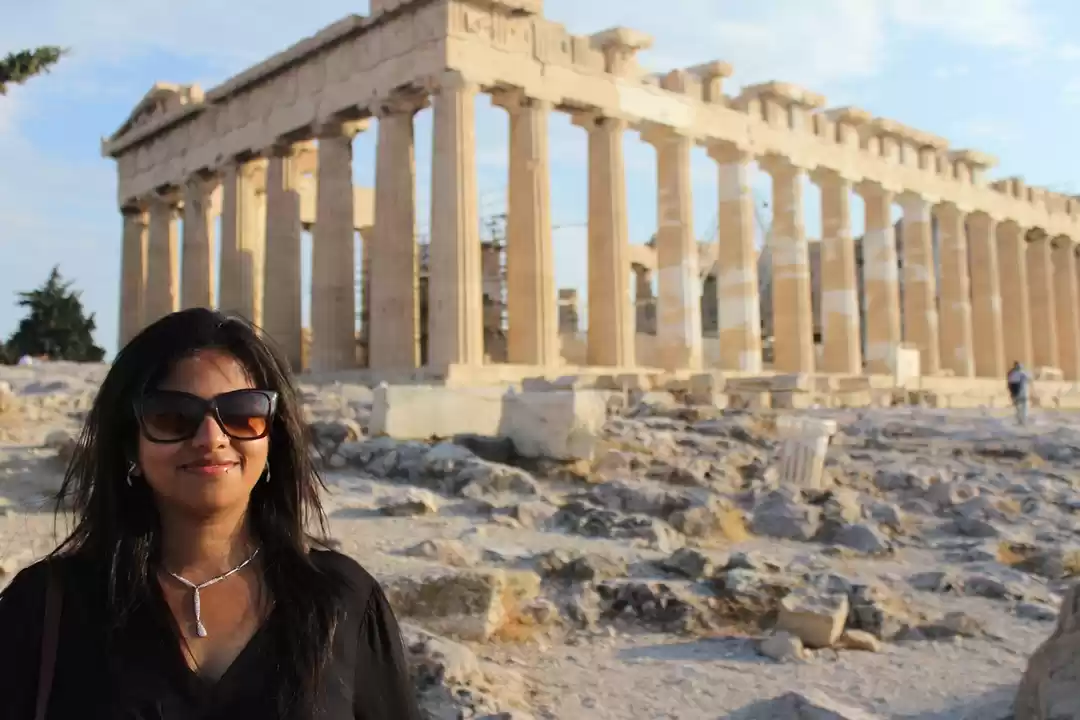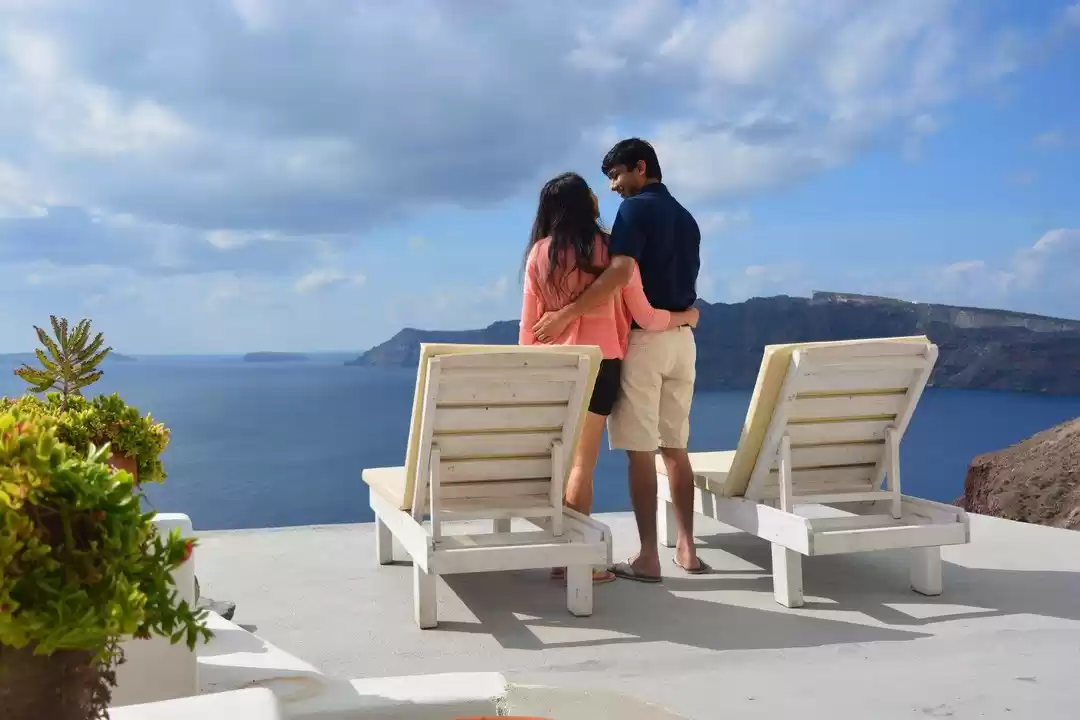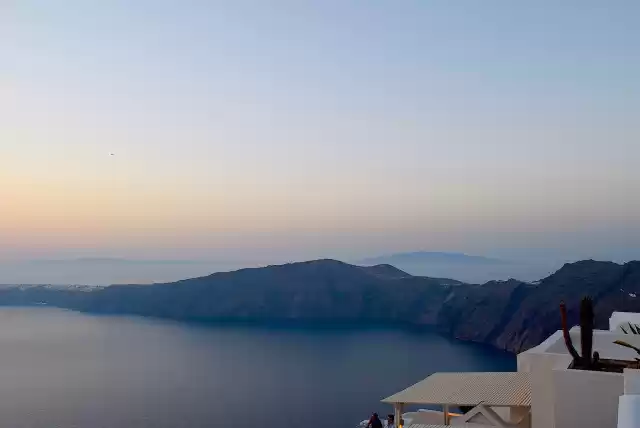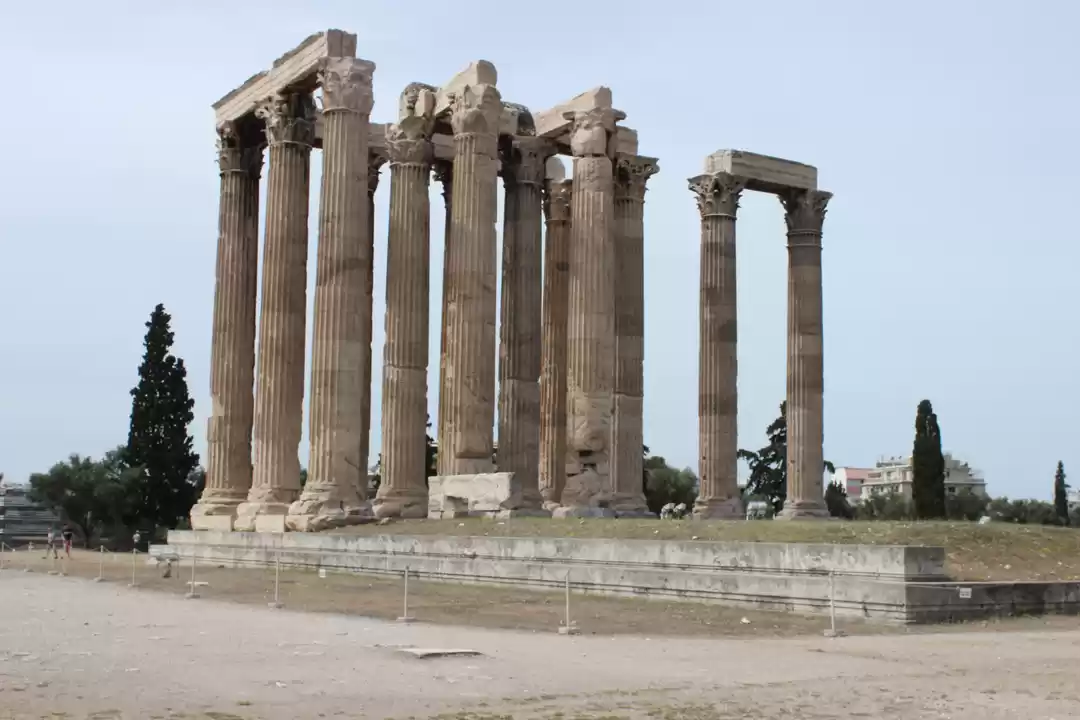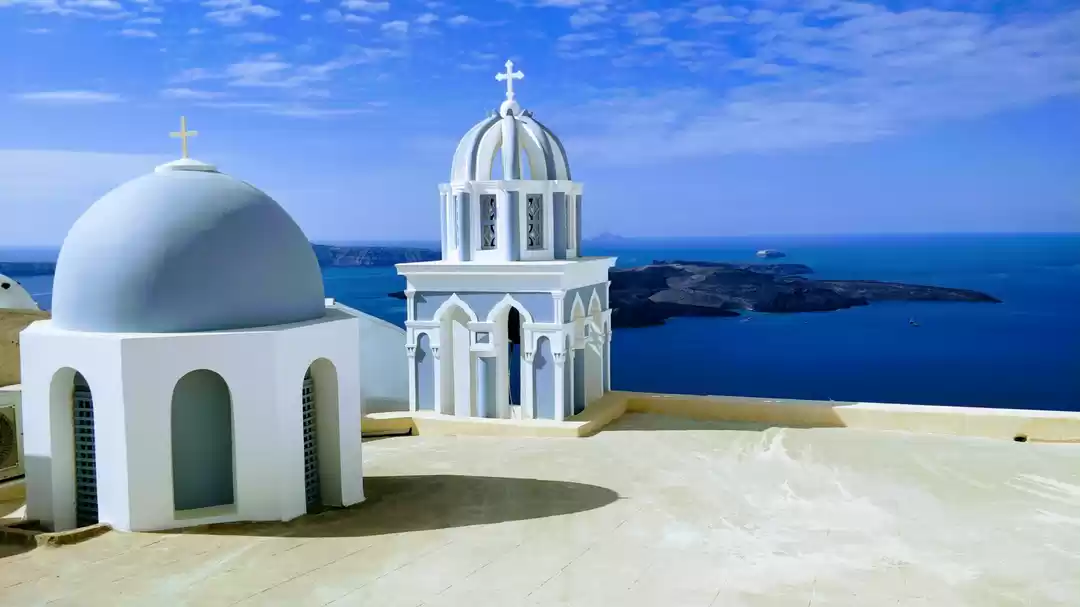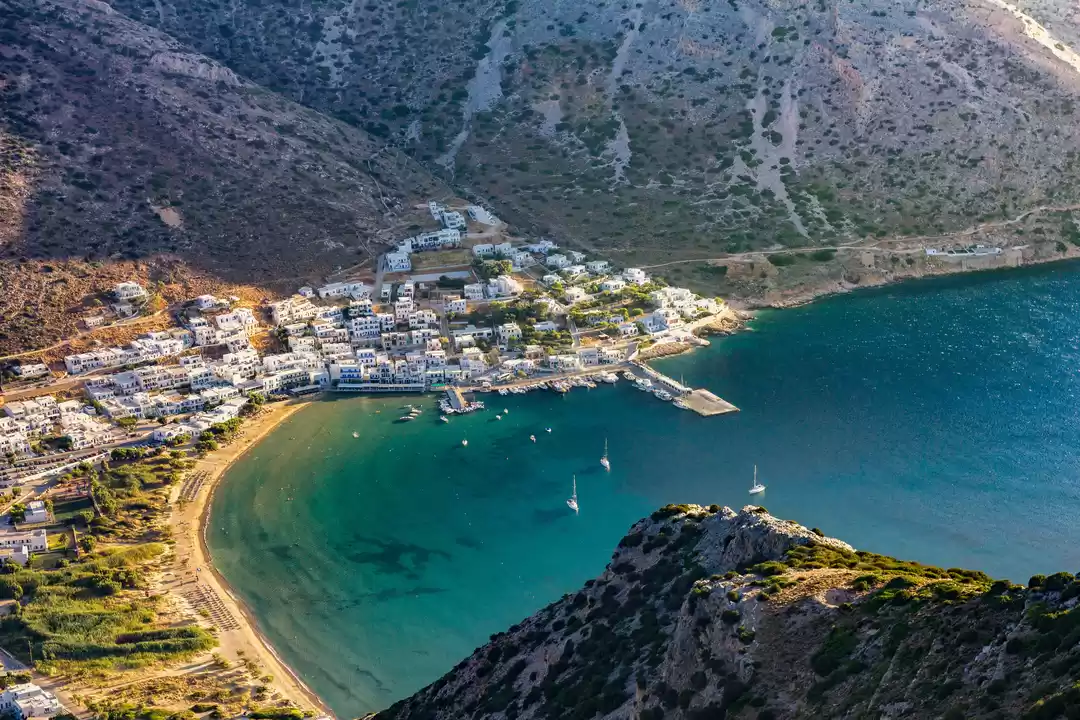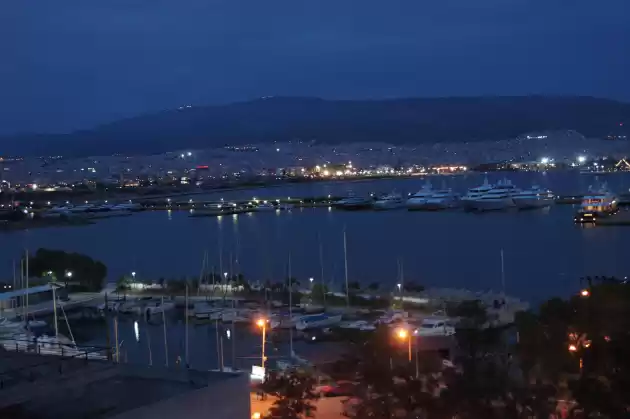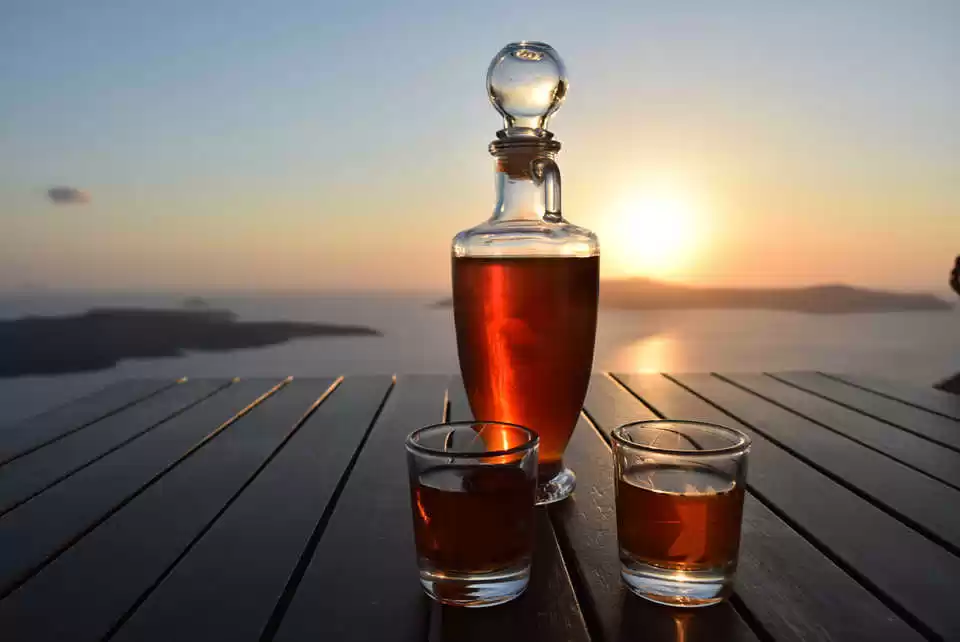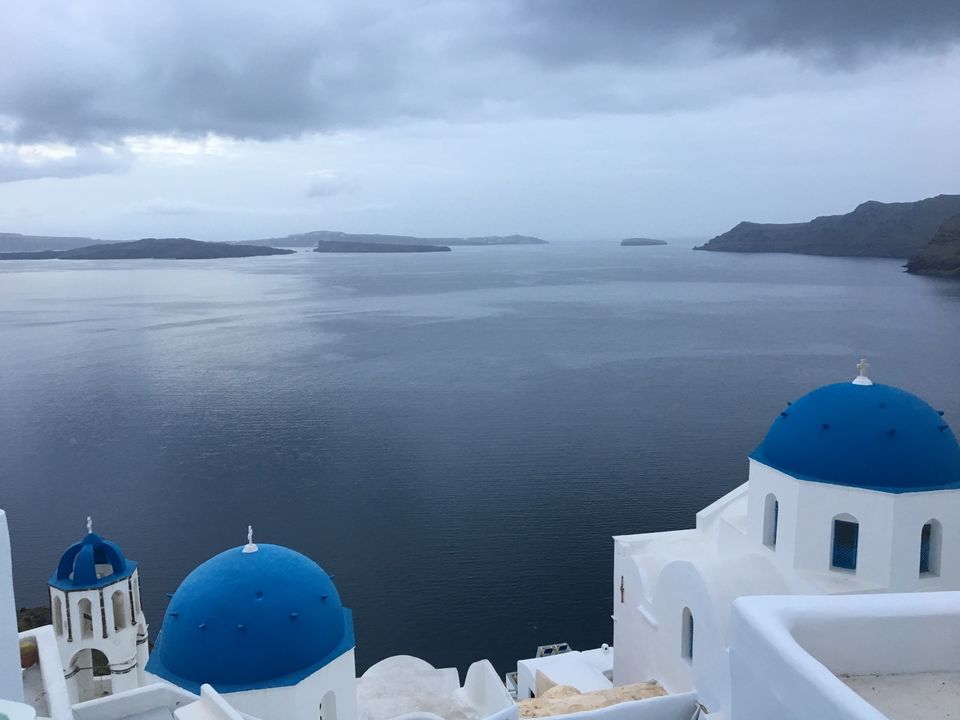
It was a quiet, gloomy, rainy morning in April 2019 when we set out from Piraeus to board the ferry to the little blue-white island of Santorini in the Aegean Sea, 236 kilometres southeast of mainland Greece. The cold drizzle was bone-chilling but failed to depress our ebullient spirits. After all we women had journeyed all the way from India to sample the ‘glory that is Greece’. We were a rather large group of seasoned, senior Orientals, eager to have a good time. Our tour guide, Anna Pilatou, was a classic beauty, you know the kind with the Greek goddess look. And she was so full of cheer, so joyful, so enthusiastic.
A few hours at sea, a brief docking at the island of Mykonos to drop and pick up passengers, and once again we were off. The slow, languorous, approach to Santorini was dream-like, the view was heart-warming, the clouds were dark, and the air was chilly.
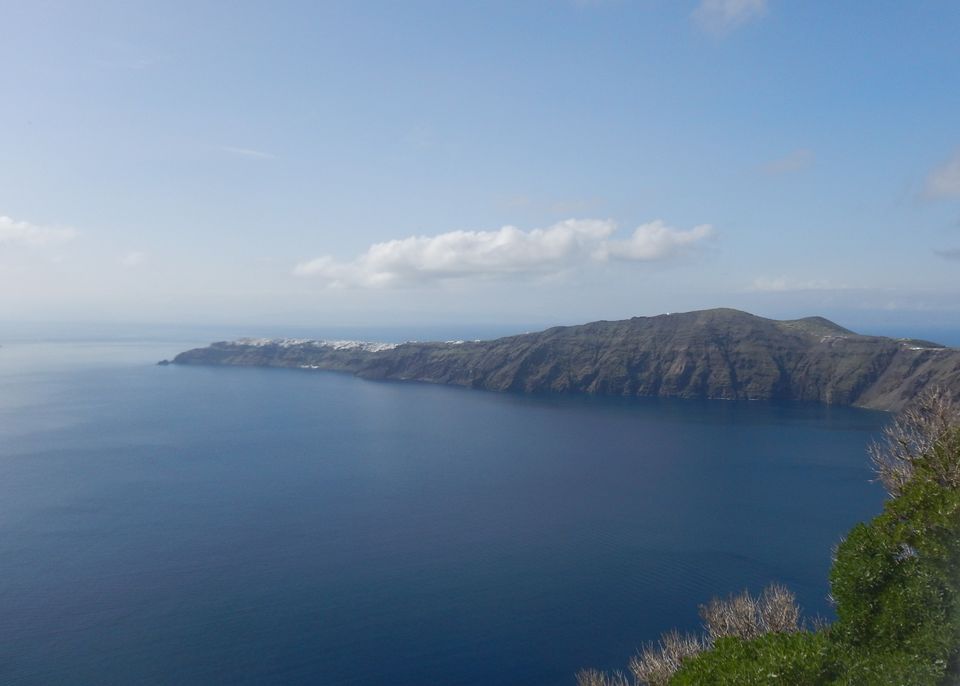
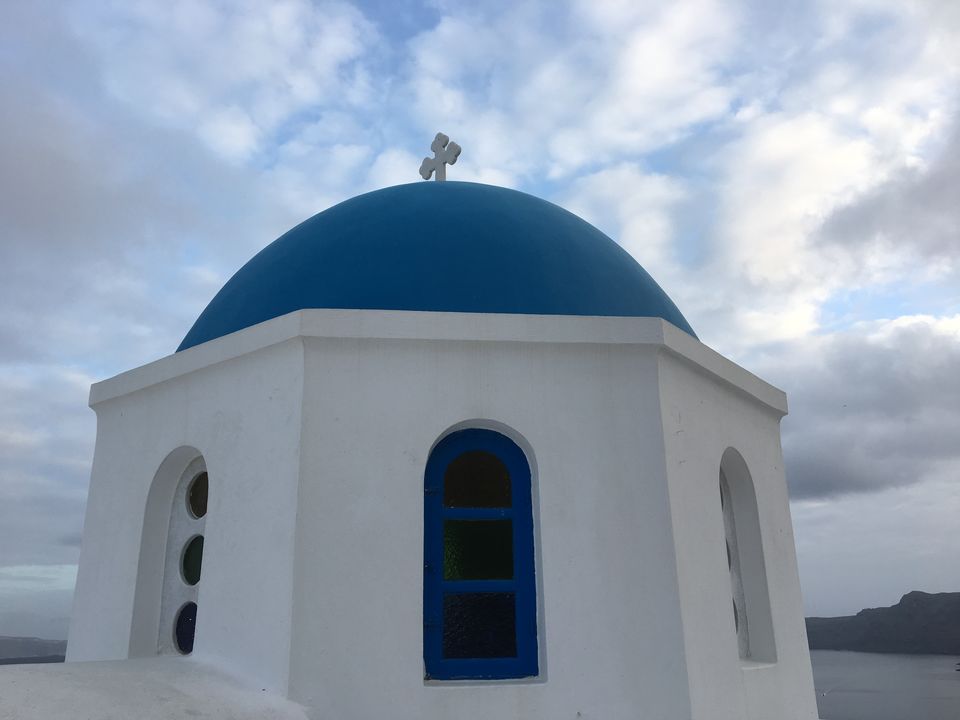
Santorini is the southernmost member of the Cyclades, which comprises several islands including Mykonos. Known in antiquity as Thera, the island was renamed after St. Irene, perhaps in the 12th century. Today the colloquial ‘Santorini’ is still in use, though the official name reverted to Thera in the 19th century.
The Cyclades had human inhabitants even from the Bronze Age. The island of Crete is just 110 kilometres to the south of Santorini. (It wasn't part of our tour program - what a shame! I'll be back, I promised myself.) During the heyday of the Minoan civilization of Crete (the earliest documented civilization in the Aegean), Santorini was flourishing too. Around 1630 B.C.E. (exact date disputed) the Minoan eruption (also called Thera eruption) was one of the largest volcanic eruptions in recorded history. That’s when Santorini acquired the sunken crater shape we see today, formed by the volcanic caldera. The magnificent Minoan civilization vanished. Thera’s treasures were buried beneath the volcanic ash.
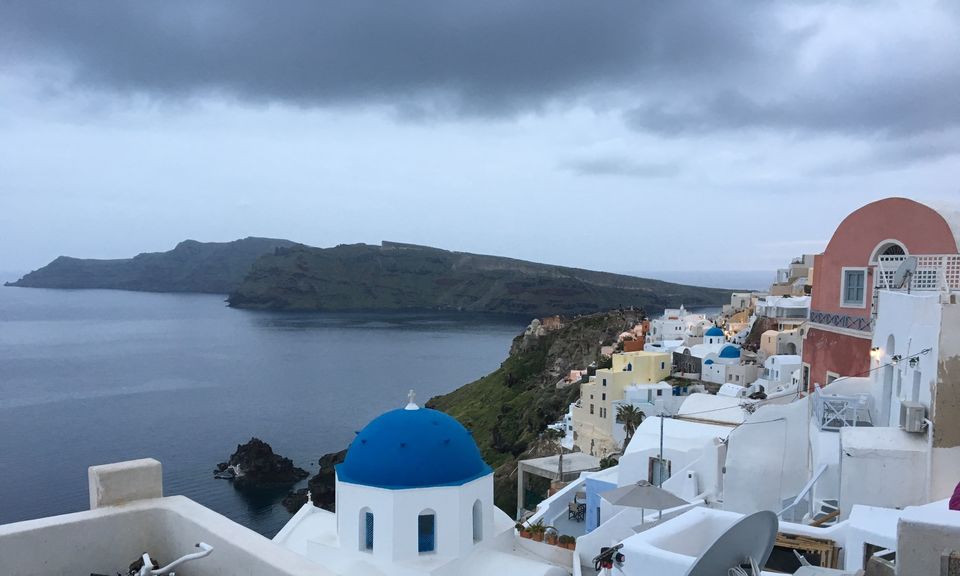
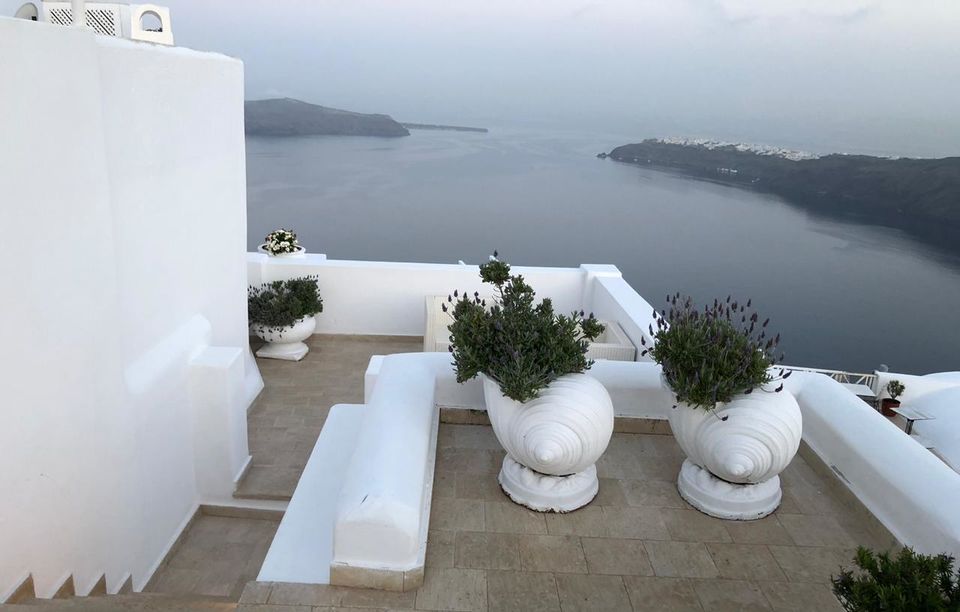
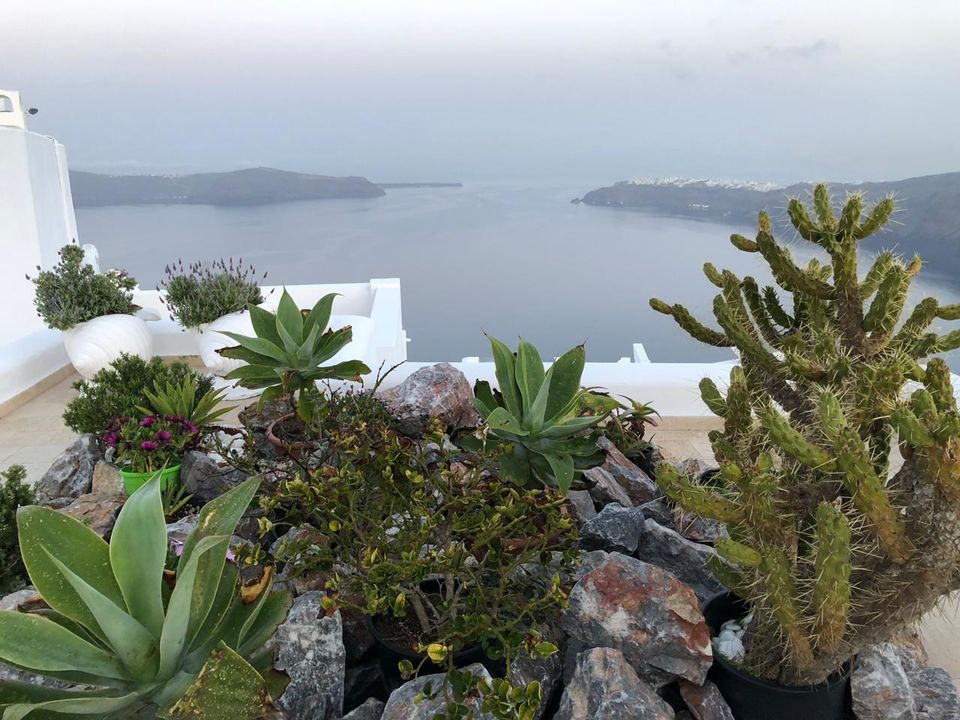
Santorini's life blood is tourism. The island has a semi-arid climate and sustains a wine industry, based on the indigenous Assyrtiko grape. Since ancient times, vintners on this island had developed a unique way of cultivating grapes. They shape the vines into protective baskets with the grapes dangling inside to shield them from the winds, and to trap the dewdrops from the morning fog. The pride of the island is the sweet and strong dessert wine, Vinsanto.
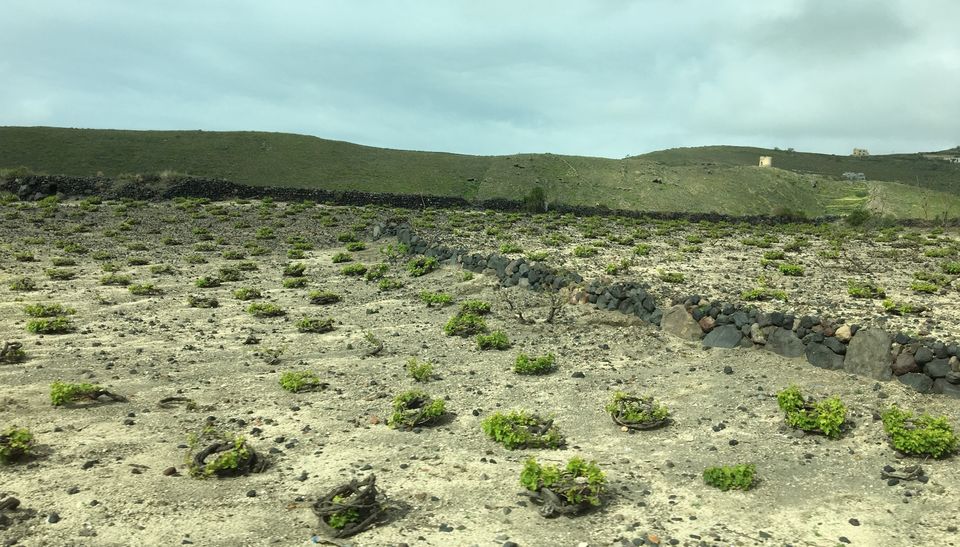
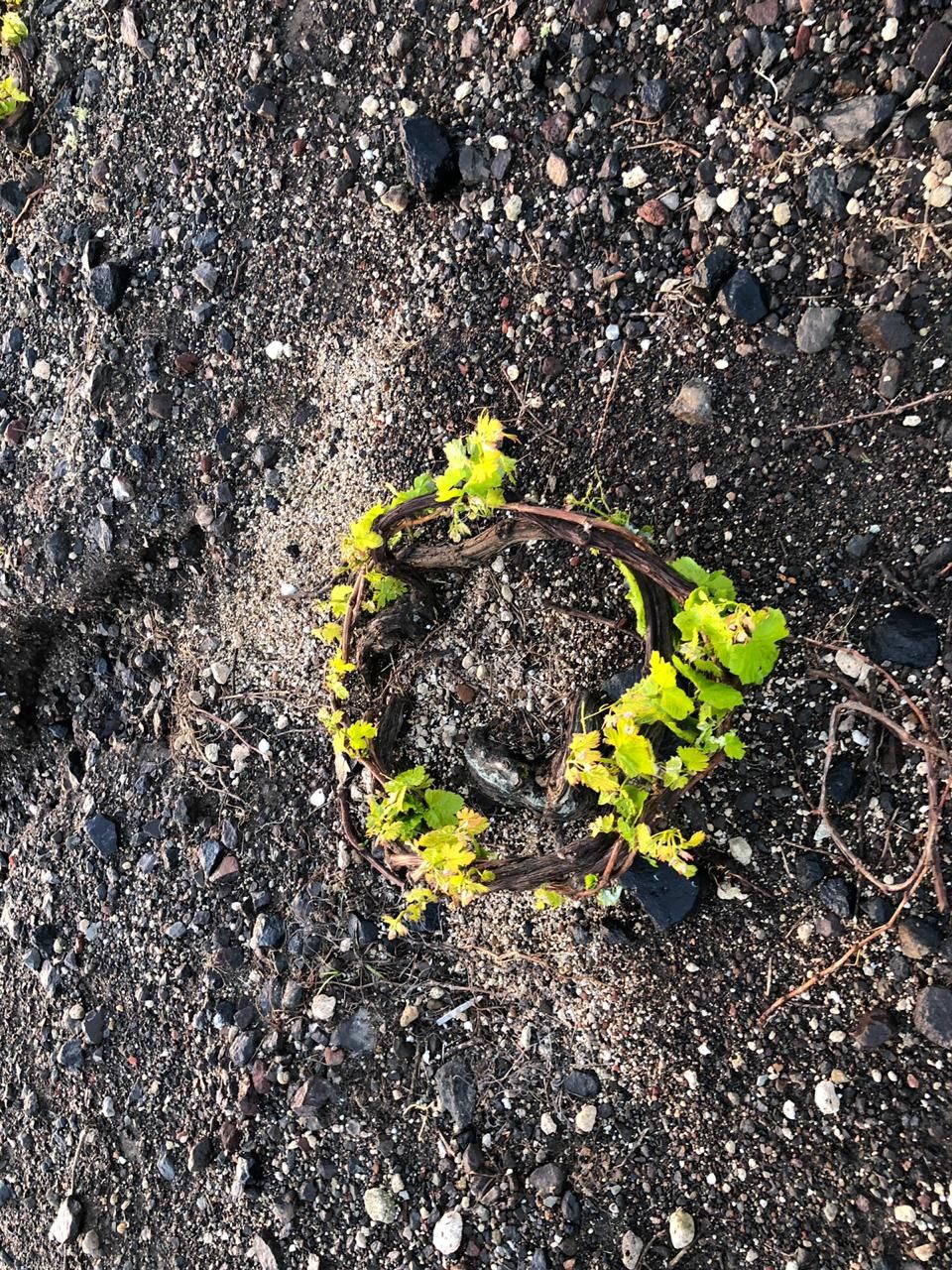
We had a taste of the rain and the sharp winds. And I forgot to sample the Vinsanto!
Oia! Oh Yeah!
The brim of the caldera is a steep precipice, sometimes nearly 1000 feet high, with tiny white towns and villages perched on the top. Fira is the island’s main town.
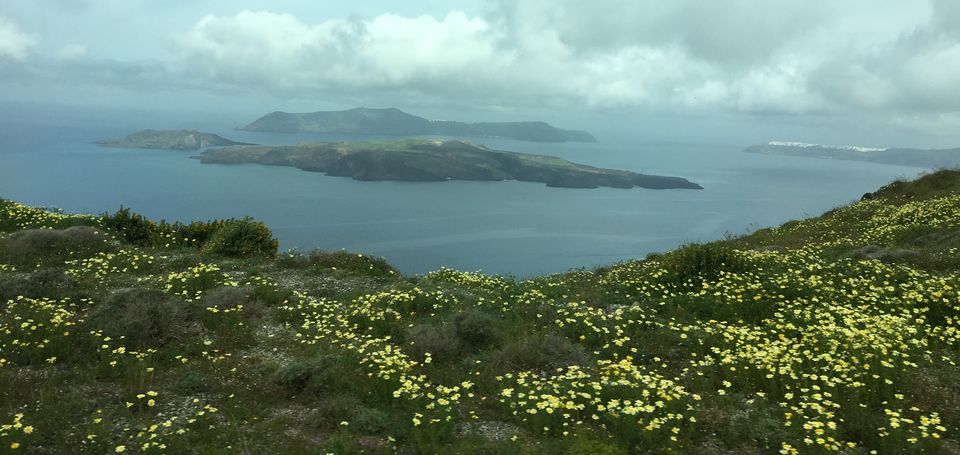
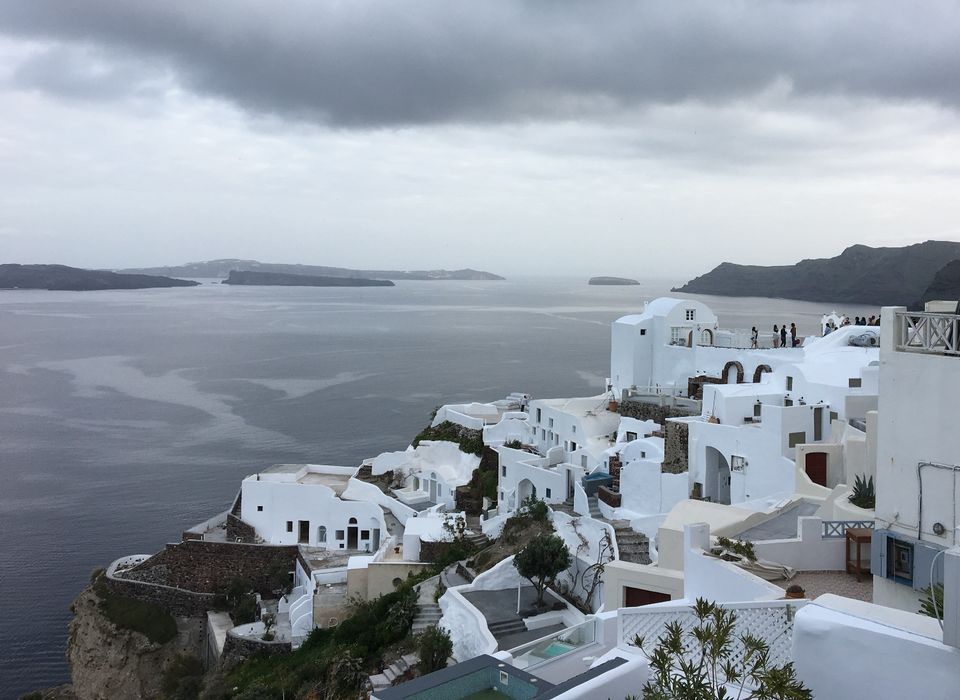
We visited the quaint town of Oia (pronounced Ee-ah), virtually poised atop a cliff overlooking the sea with its whitewashed blue-domed buildings. Blue and white - the colours of the Greek flag. A coincidence? No idea. But the colour combination is both pretty and practical, keeping the dwellings warm in winter and cool in summer, and the island delightfully picturesque against the backdrop of the azure blue sea. Writing in Corona Virus times I can’t help recalling that Santorini itself has a starched, white-washed, sanitized, squeaky clean look.
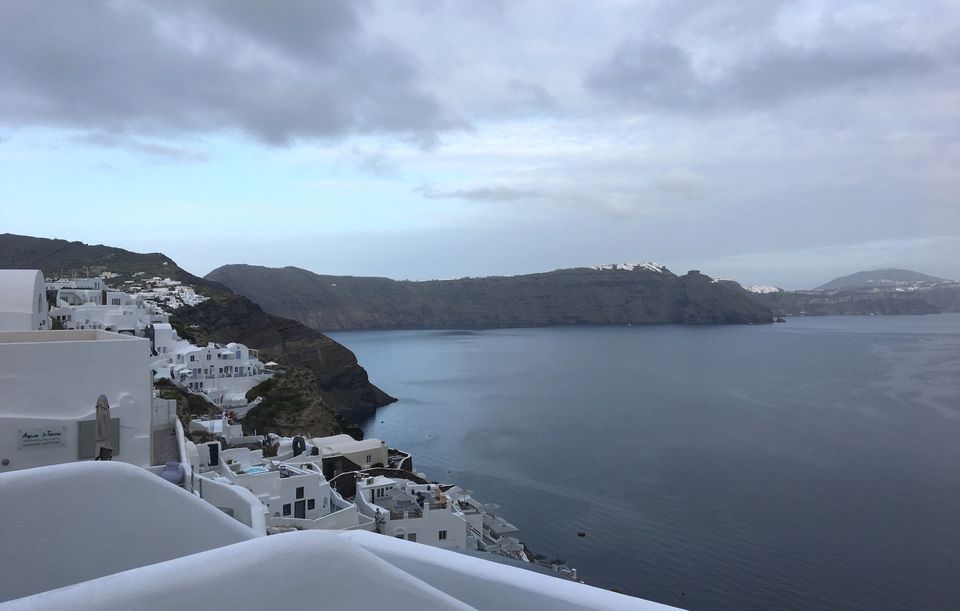
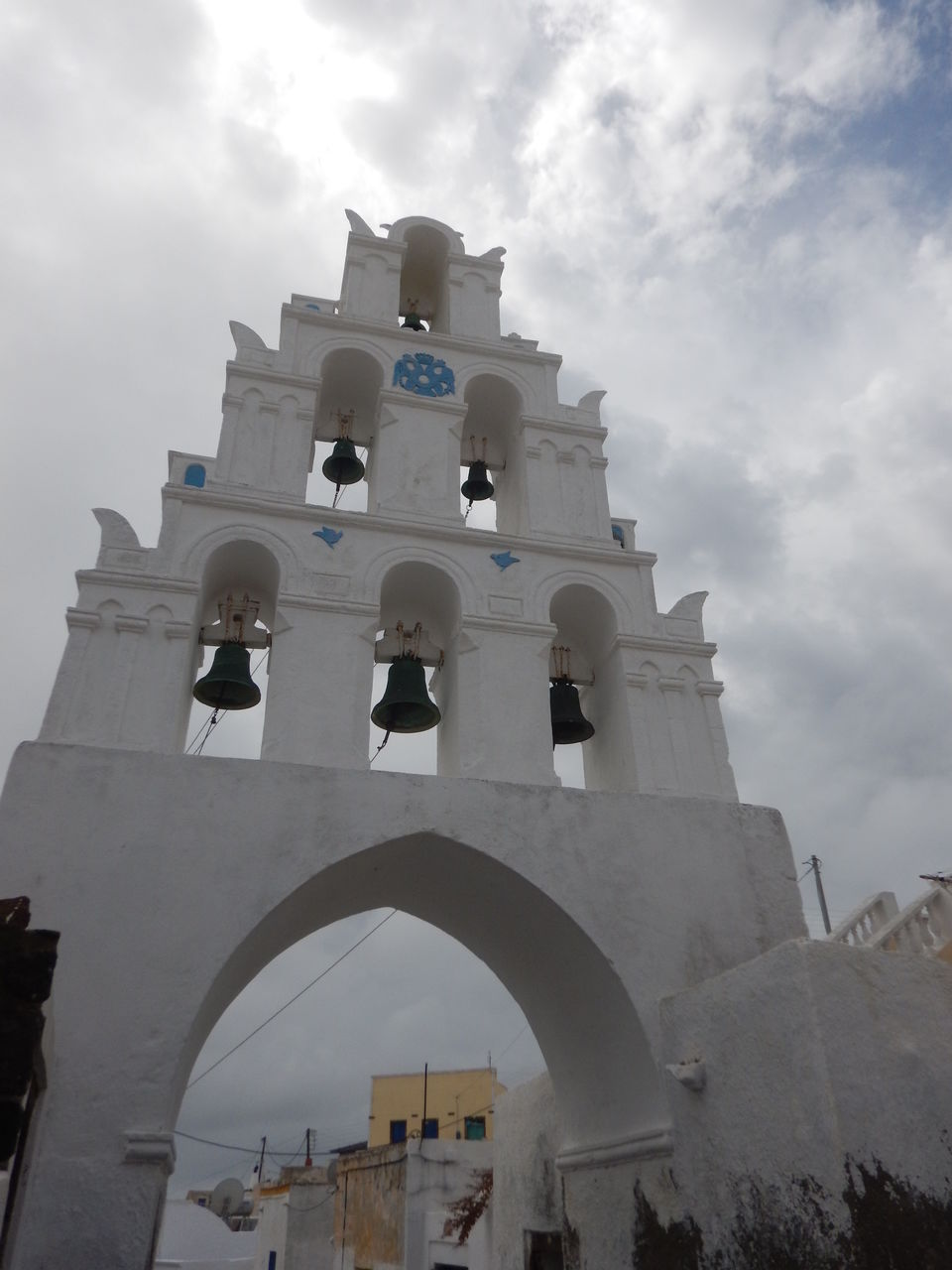
Every evening hundreds of tourists gather to witness the glorious sunset. We hung out for hours jostling for the most coveted spots, but the sun neither appeared nor disappeared. It was a great disappointment.
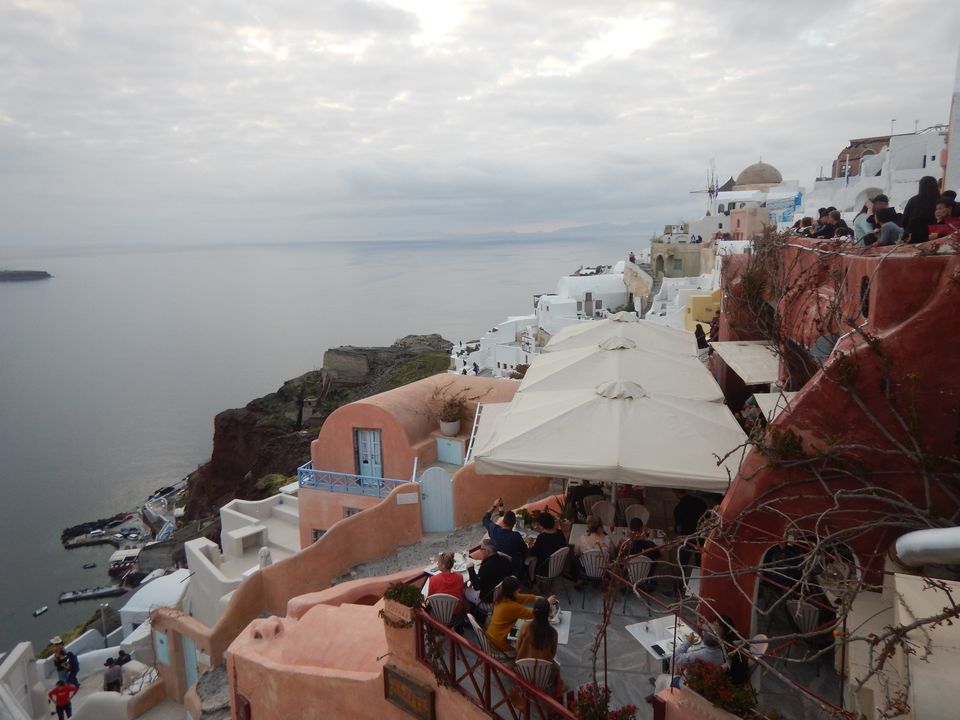
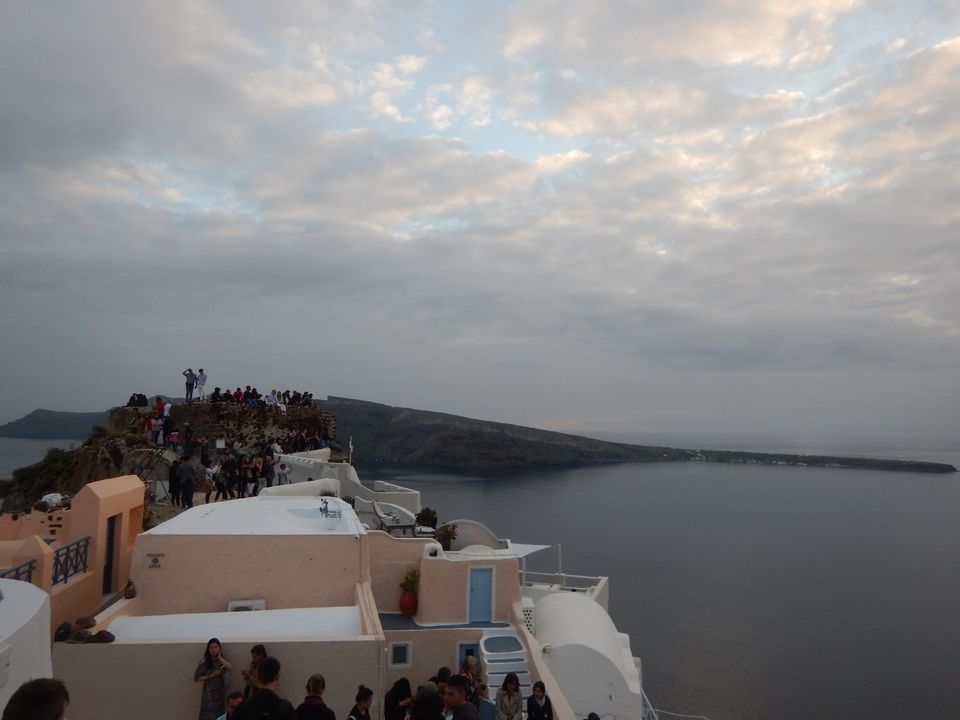
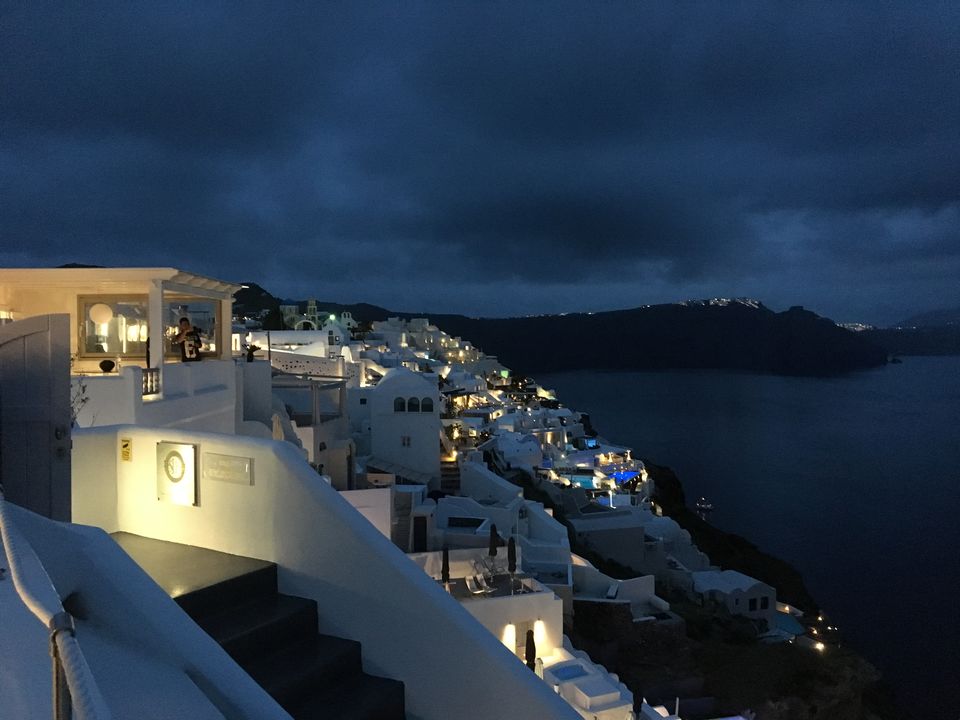
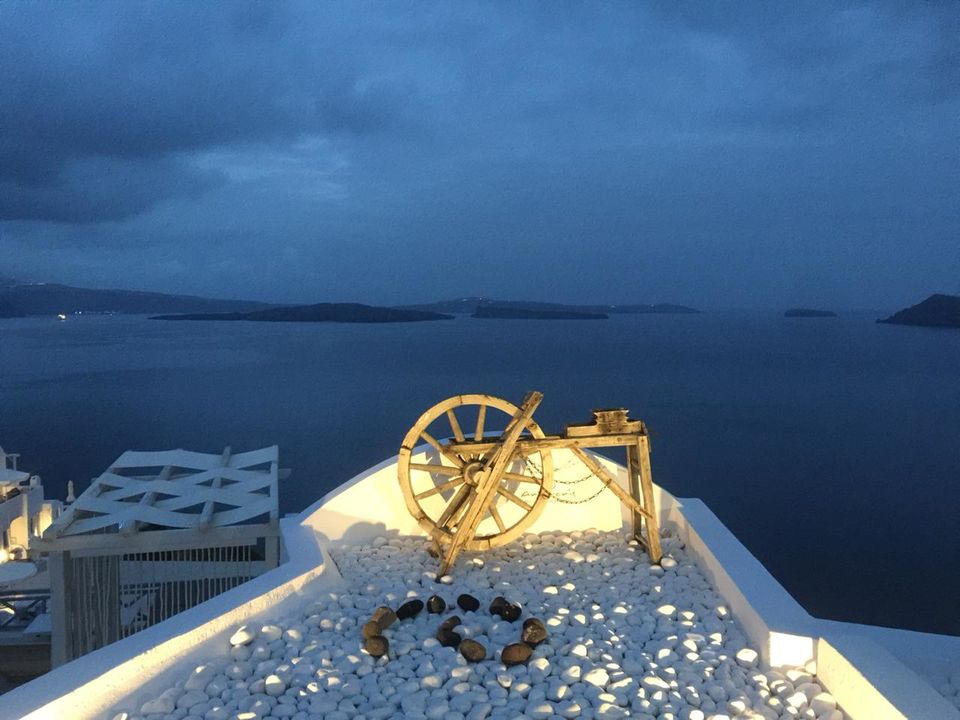
Akrotiri – A Miracle Find
Akrotiri, located on a peninsula at the southern end of the island, is a major archaeological site, with ruins from the Minoan era. Only 3% of the site has been excavated and yet the discoveries are mind-blowing. Three-storeyed buildings with stone stairways, well laid out streets with underground sewerage systems, clay pipes to supply water, painted ceramic vases and colourful frescoes, all leave the visitor spell bound.
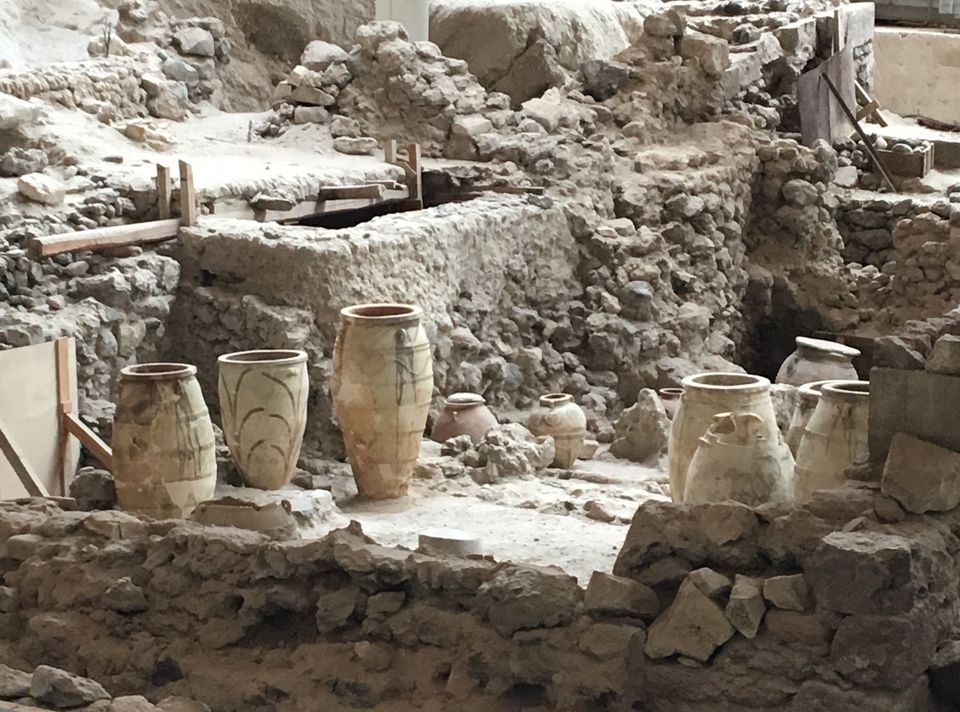
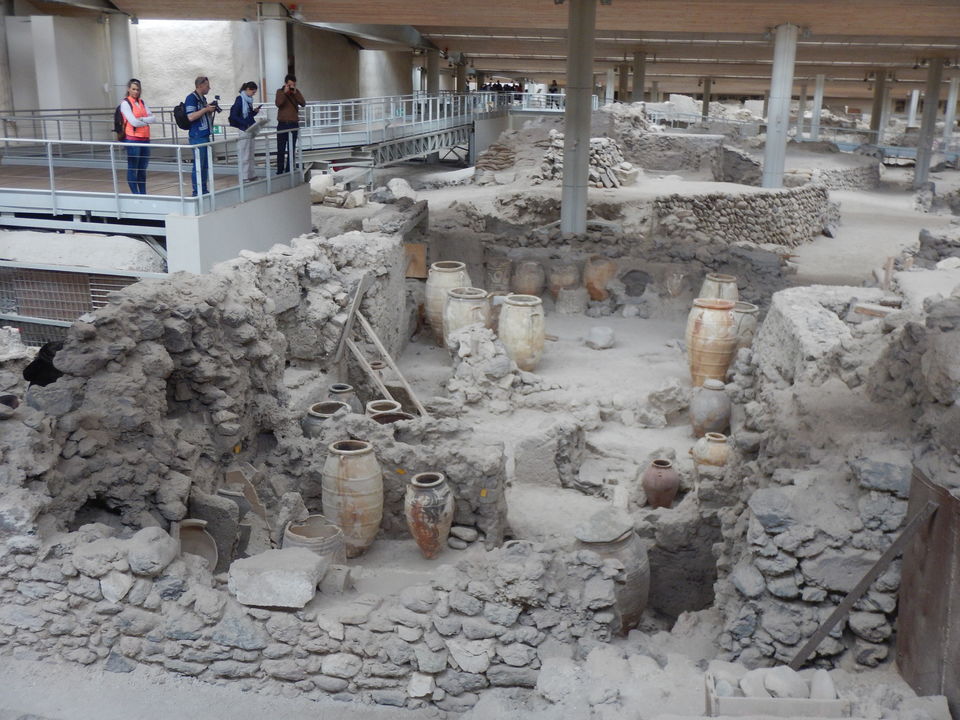
The presence of a loom workshop suggests that textiles were woven for export. The water closets found at Akrotiri are the oldest such utilities discovered anywhere in the world. Water pipes are found in pairs, indicating that both hot and cold water were being used. Today Santorini has no river, so where did the water come from? Were there geo-thermal springs before the great Minoan eruption? One can only speculate.
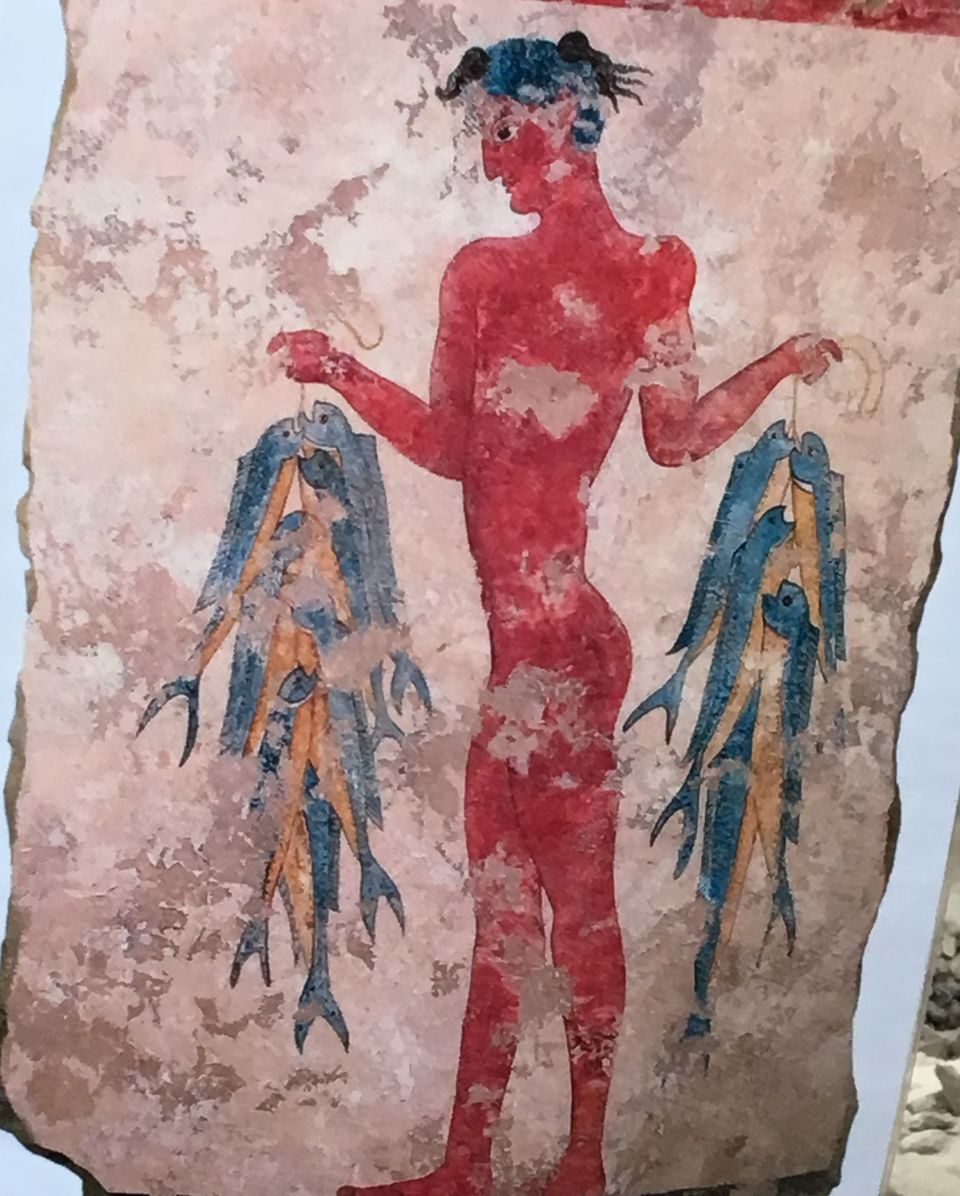
The dainty frescoes reveal the wealth and sophistication of the inhabitants of the island, their artist culture, fishing industry, and maritime tradition. They present exotic images such as ‘saffron-gatherers’ offering crocus-stamens to a seated lady, a fisherman holding strings of fish in both hands, a flotilla of boats accompanied by leaping dolphins, women wearing ear-rings and ornaments much like those we wear today, to name only a few. The excavated objects came from Crete, Cyprus, Anatolia, mainland Greece, and even Egypt and Syria.
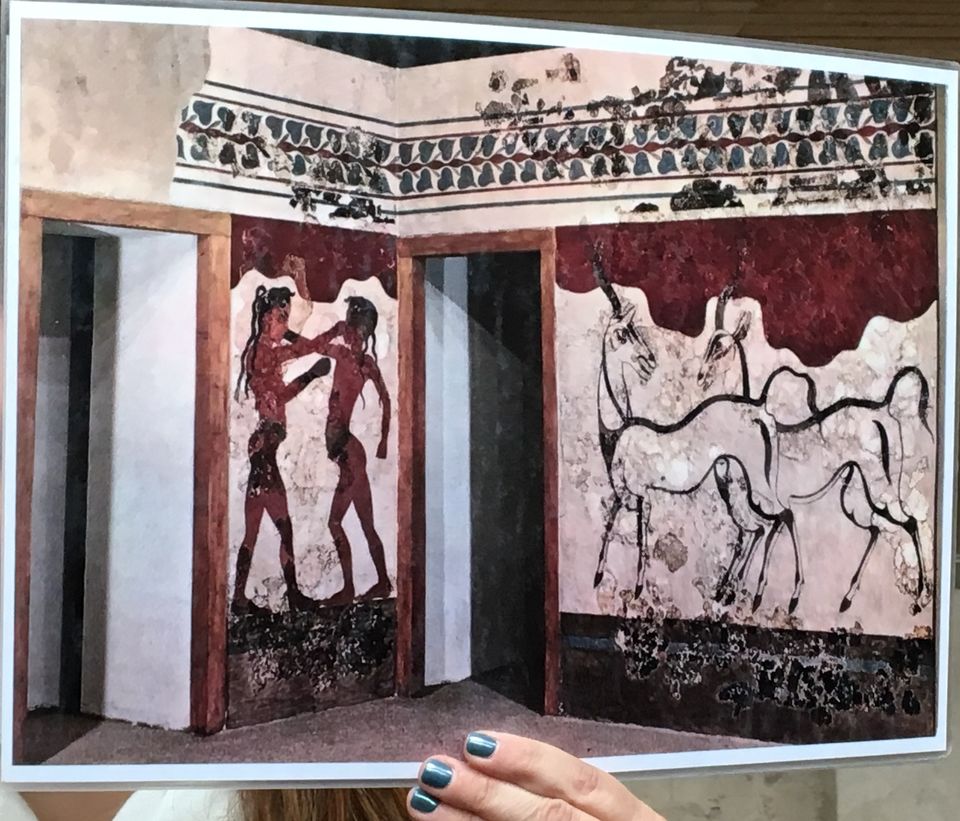
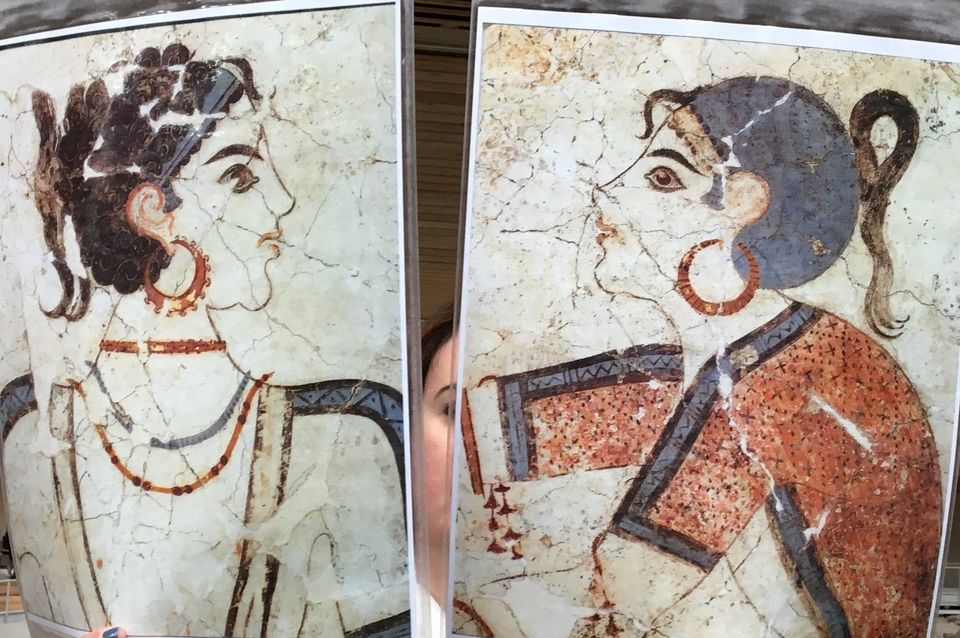
Pre and Post Eruption History
A popular story holds that the Thera eruption gave rise to the legend of Atlantis. After the Akrotiri find many similarities were observed between the ancient settlements on Santorini and Plato’s description of Atlantis.
Humans have lived on Santorini from the middle of the 5th millennium B.C.E. The earliest settlers probably migrated from Anatolia (mainland of modern Turkey). In the 3rd millennium B.C.E. this region developed into a proto-urban centre. From 2100 B.C.E. to 1650 B.C.E. a sophisticated port city emerged and was engaged in trade well beyond the Aegean. But there were earthquakes and the great Thera eruption. The city was buried under ash and lava and the frescoes were perfectly preserved only to be discovered by 20th century humans 3600 years later. Excavation began in 1967.
Following the Bronze Age Collapse (1200 B.C.E. to 1150 B.C.E.) that saw the disappearance of the Mycenaean kingdoms, the Phoenicians probably founded a settlement on Thera. The Dorians may have come here in the 9th century B.C.E. They later claimed they had named the island after their leader Theras. During the Peloponnesian War (431 to 405 B.C.E.), Thera aided Sparta against Athens. The Athenians soon captured Thera, but lost it again.
The Ptolemies of Egypt later held Thera as a naval base. With the decline of Greek power came the Romans, the Venetians, and then the Ottomans. Santorini was occupied first by Italy and then by Germany during World War II. A devastating earthquake struck in 1956 and most of the residents had to evacuate to Piraeus and Athens.
For the last 200 years Santorini has been part of Greece. Today it receives an estimated 2 million tourists annually. The island has a major airport.
We flew back to Athens. I was glad we didn’t have to take the ferry again. In warmer weather it might have been exciting.

What We Missed
The Black Beach at Perissa, the Red Beach close to Akrotiri and the White Beach. And of course, Crete was the greatest miss of all. I think I’ll have to ‘create’ another trip to Crete!
Glimpses of Mykonos
Mykonos we are told is a party place that’s especially gay-friendly. It’s a half hour from Athens by flight. We had a few glimpses as our ferry docked there.
